The best traditional German foods and recipes to try beyond bratwurst
German culinary classics
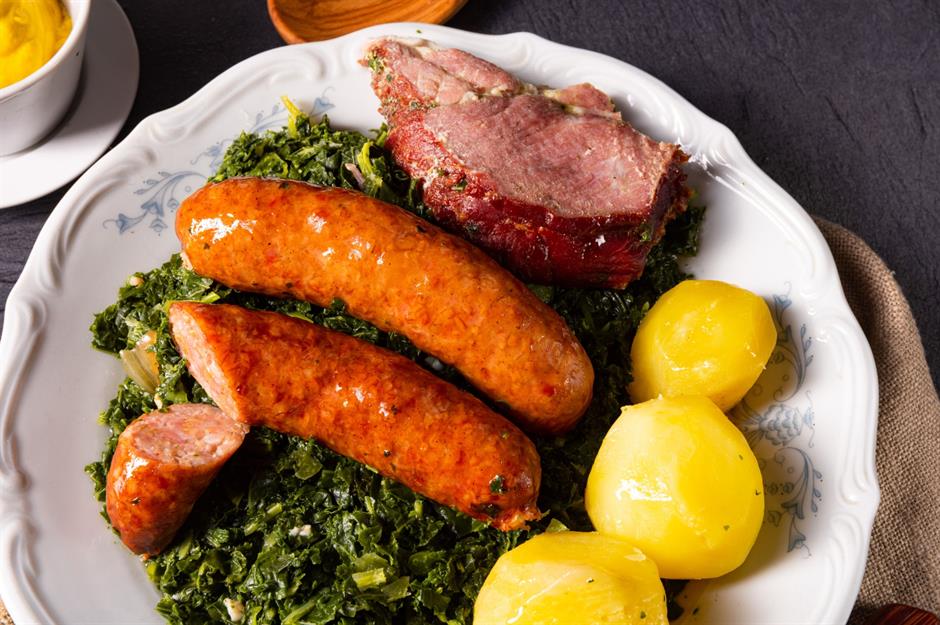
While Germany isn't as famous for its cuisine as some of its European neighbours, the country does have more to offer than pretzels, bratwurst and beer. From hearty comfort food, delicious baked goods and desserts to regional delicacies, there's plenty to try. Here, we take a look at some of Germany’s weird and wonderful retro dishes – some of which rarely make it onto dinner plates today. We’ll leave it up to you to decide whether that’s a good or bad thing...
Click or scroll through our gallery to discover Germany's greatest-ever traditional dishes, counting down to our absolute favourite.
27. Mett-hog
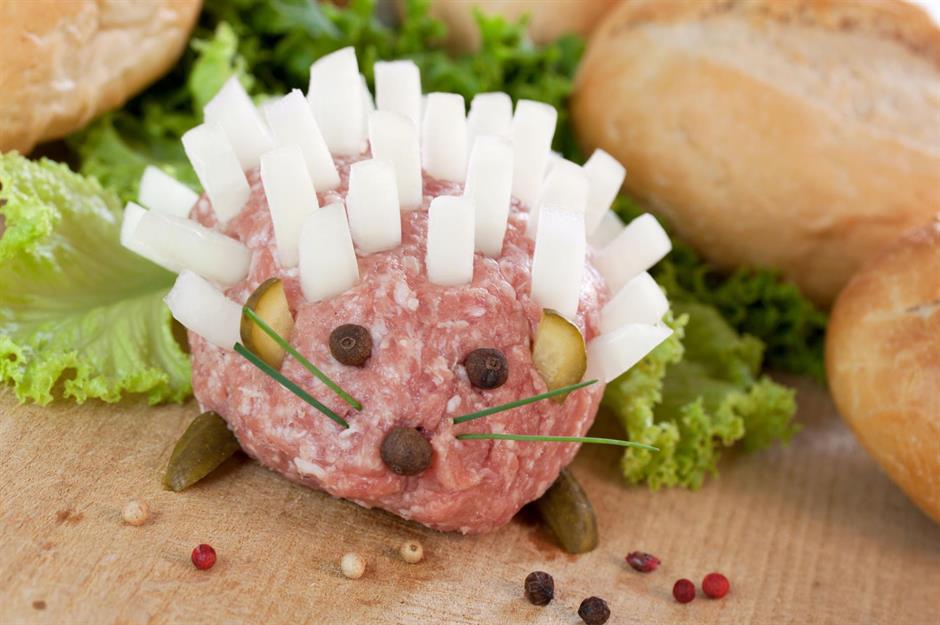
This cute little guy is made from mett – minced raw pork that’s seasoned with salt and pepper. Yes, you read that right: raw meat. Between the 1950s and 1970s you wouldn’t find a German birthday party or cold buffet without one of these little meat mounds, lovingly decorated with onions and gherkins to look like a hedgehog. However, due to its ingredients, it doesn’t keep all that well. While it’s no longer a party classic, you can still find bread rolls slathered in mett in some bakeries (on the off-chance you wanted to give the dish a try).
26. Großer Hans
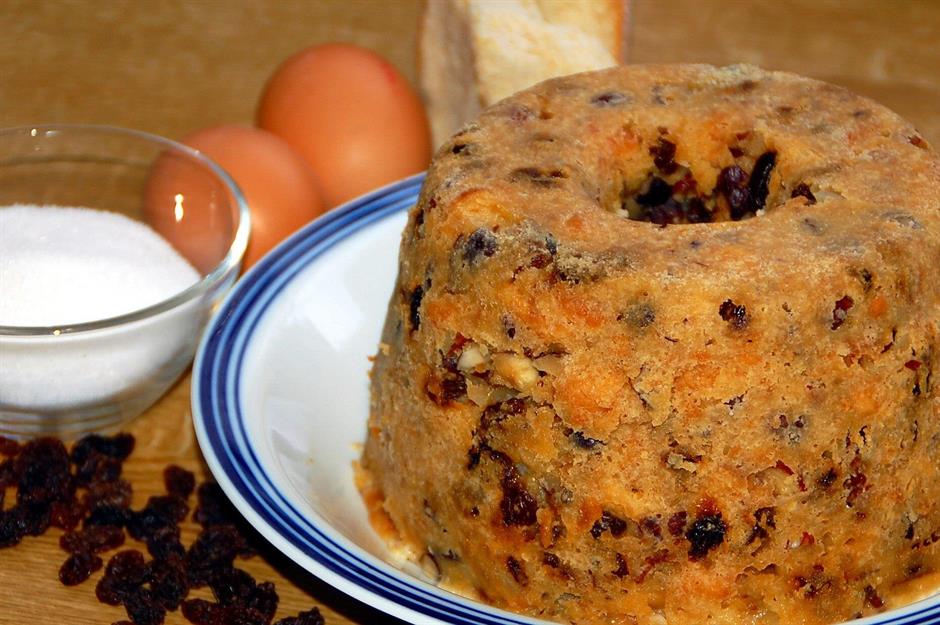
The grandly named großer Hans (great Hans) is a steamed bread dish, a little like a British-style steamed pudding, from northern Germany. It can be sweet or savoury, and it can be served as a main course with pork or as a dessert with fruit compôte – a true all-rounder. Nowadays, it’s usually made from flour or yeast dough; however, traditionally, people would soak their stale leftover bread in milk. Add berries or sultanas for a little sweetness.
25. Zucker-ei

Zucker-ei (sugar-egg) is a traditional dessert made from, well, sugar and eggs. The eggs are beaten in a bowl, mixed with sugar, then whisked until creamy. Also known as kogel mogel, the recipe has Eastern European and Jewish roots, and it used to be popular as a cheaper alternative to pudding. People would often add red wine and a dollop of honey for a nightcap, or to make an energy booster for the sick. When you mix zucker-ei with spirits, you get the much more widely known eggnog.
24. Stuffed pig’s stomach
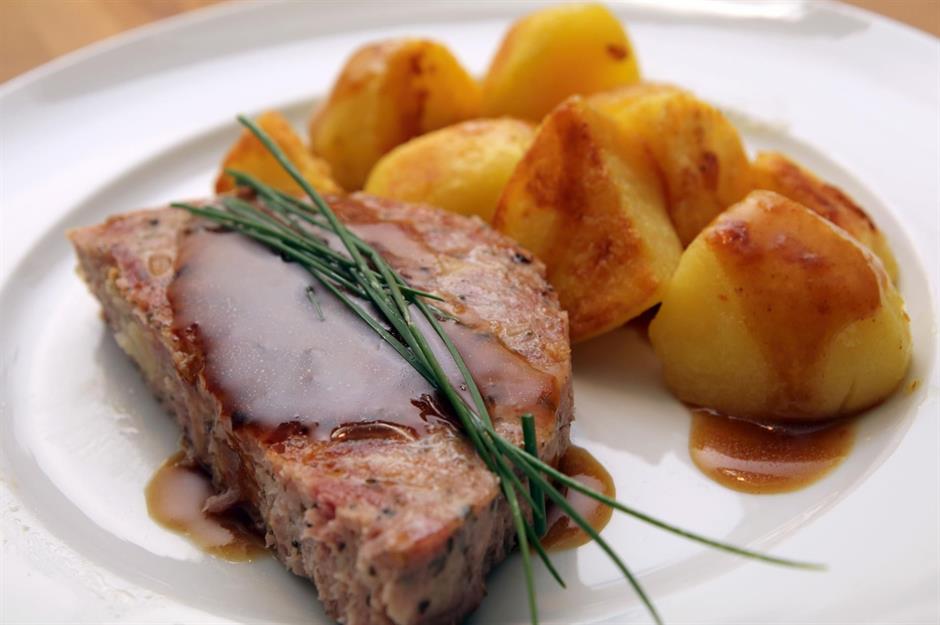
The name may not sound overly appealing, but former German chancellor Helmut Kohl absolutely loved this dish. It originates from southern Germany and consists of pork, sausagemeat and potatoes. The mixture is seasoned with spices, stuffed into a pig's stomach, then cooked in a similar way to Scottish haggis.
23. Toast Hawaii
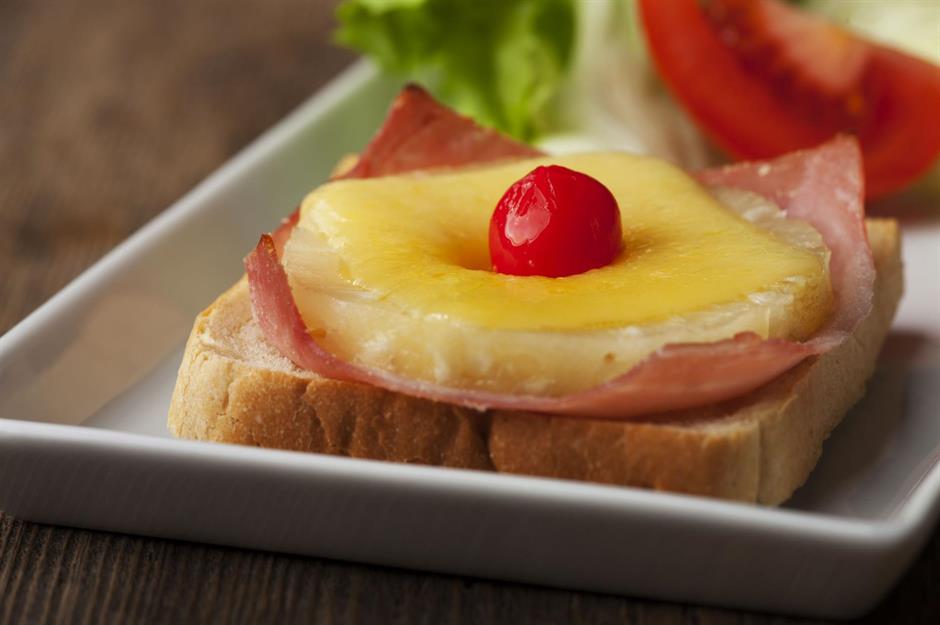
Toast Hawaii is as old-school as it gets. It became popular in West Germany during the 1950s, but the tasty, quick and easy-to-make snack has all but disappeared from people’s repertoires. Similar to Hawaiian pizza, it involves a combination of ham, cheese and pineapple. On a side note, you can easily make it vegetarian by omitting the ham or by using a plant-based alternative.
22. Leberkäse

Though its name is made up of the German words for liver and cheese, leberkäse contains neither of these ingredients in Bavaria (in some places, it does have liver, though). So, what’s actually in it? This baked loaf of meat – which isn’t really a meatloaf, either – is made from finely chopped, seasoned pork and/or beef. Usually eaten on a hard semmel bread roll with mustard and pickles, it can also be cut into slices to enjoy with a creamy potato salad – or fried and eaten with eggs and rustic home fries.
21. Himmel und Äad
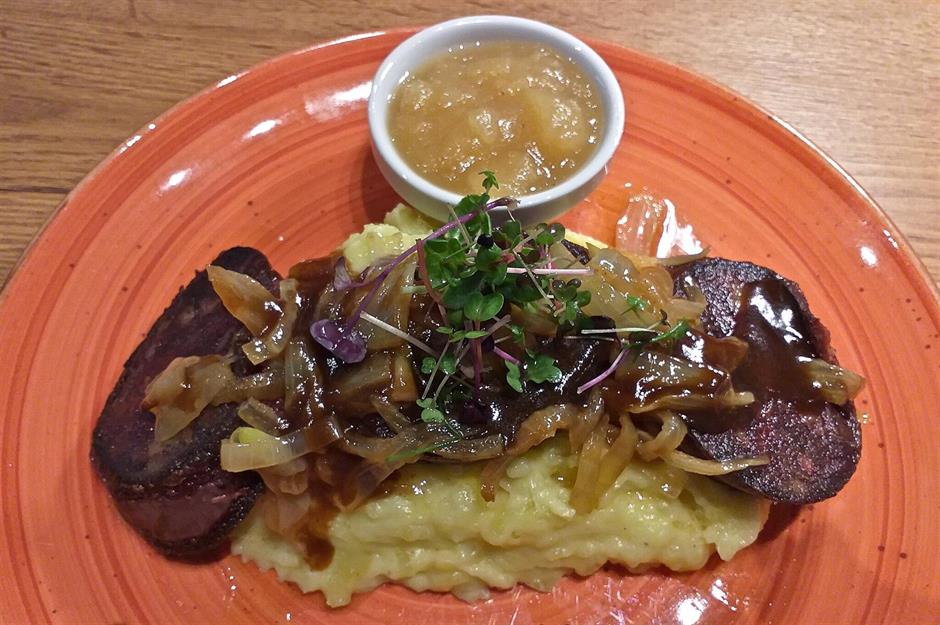
Himmel und Äad, or Heaven and Earth, is originally from the Rhineland region in central Germany, but it used to be a popular dish all over the country – a real classic that (obviously) tasted best at grandma’s table. It’s a combination of mashed potatoes and apple sauce, which might sound strange to some; however, don’t knock it until you've tried it. It's delicious! It’s often accompanied by grützwurst (more on that later).
20. Soleier
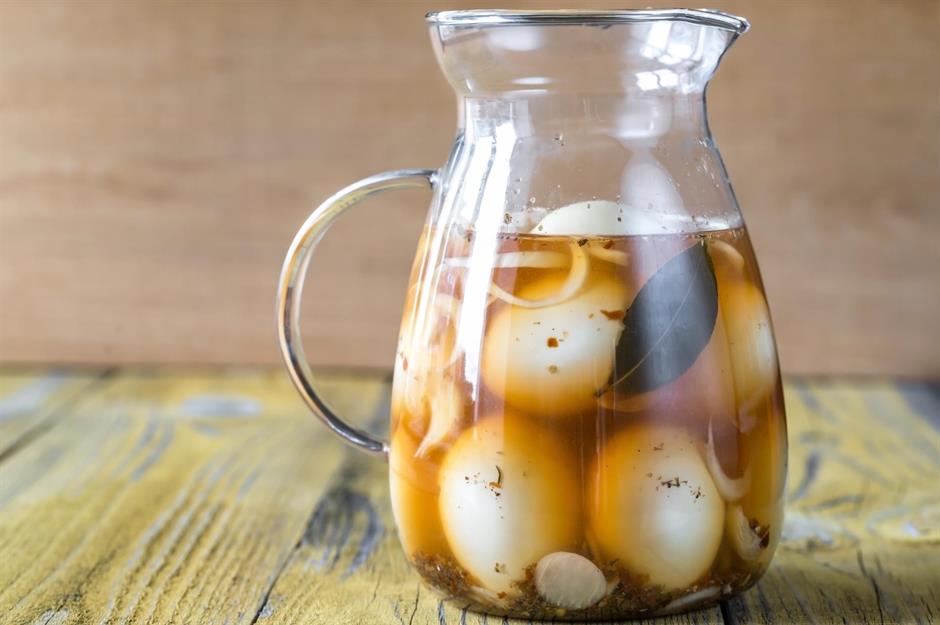
These pickled eggs are the ideal bar snack, especially when paired with a soft pretzel and obatzda (a creamy beer cheese dip) for dunking. Brined in vinegar with salt, onions and spices for a big hit of flavour, they’re well preserved, so they can last for weeks. They’re easy to make at home, as long as you know how to boil an egg. All you need is a large jar, plenty of vinegar and your choice of aromatics (common additions include peppercorns, mustard seeds, allspice and cloves).
19. Handkäse mit musik
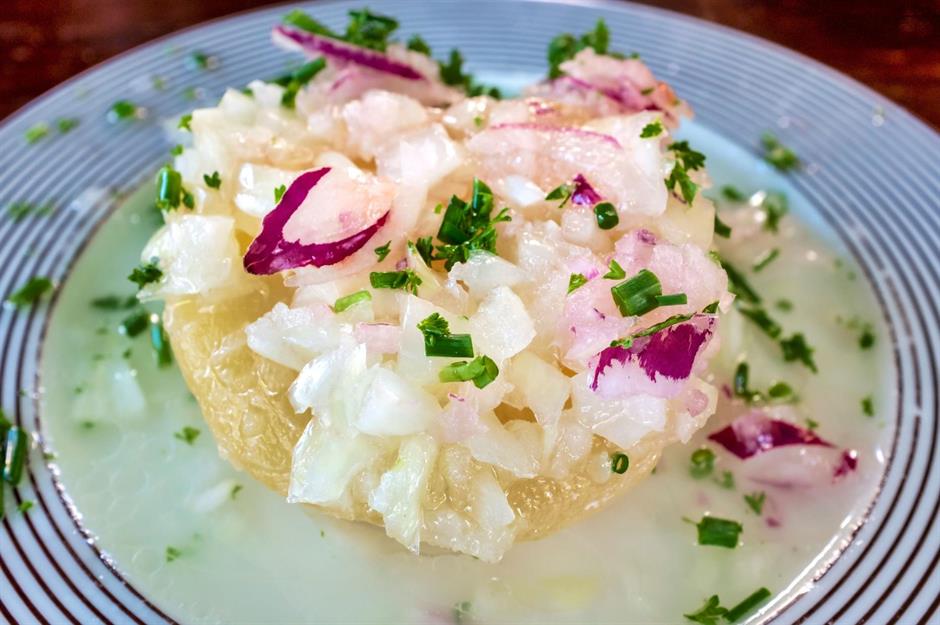
The oddly named handkäse mit musik (hand cheese with music) originates from central Germany. It's a type of sour milk cheese, and it's served with buttered bread and cider. Traditionally, the cheese is marinated in a mixture of vinegar, oil, finely diced onions, caraway seeds, salt and pepper. The little portions used to be shaped by hand, hence the name. There are different theories as to what the 'music' in the name is referring to; some say it's a nod to the noise the onions make when you cut the cheese.
18. Grützwurst
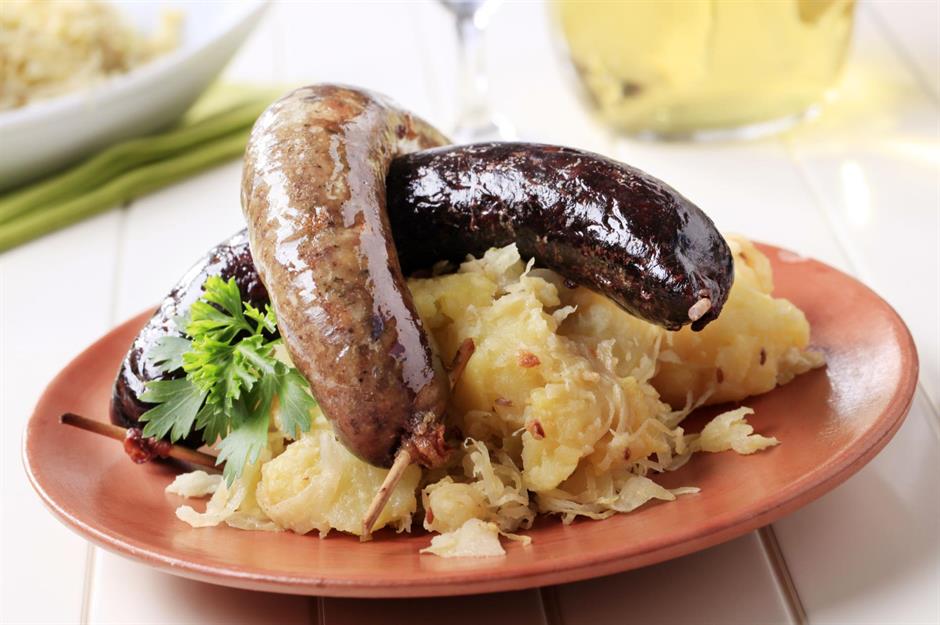
Germany is known for its sausages, but the bratwurst is just one of many the Germans have perfected. Another is the grützwurst, a smoked sausage similar to black pudding, which is made of pork, pigs’ blood and groats. Due to the colouring of the dish, it’s also known by the macabre name of tote oma (dead grandma). The smoked sausage is traditionally served with boiled potatoes and sauerkraut – another German delicacy.
17. Rote grütze
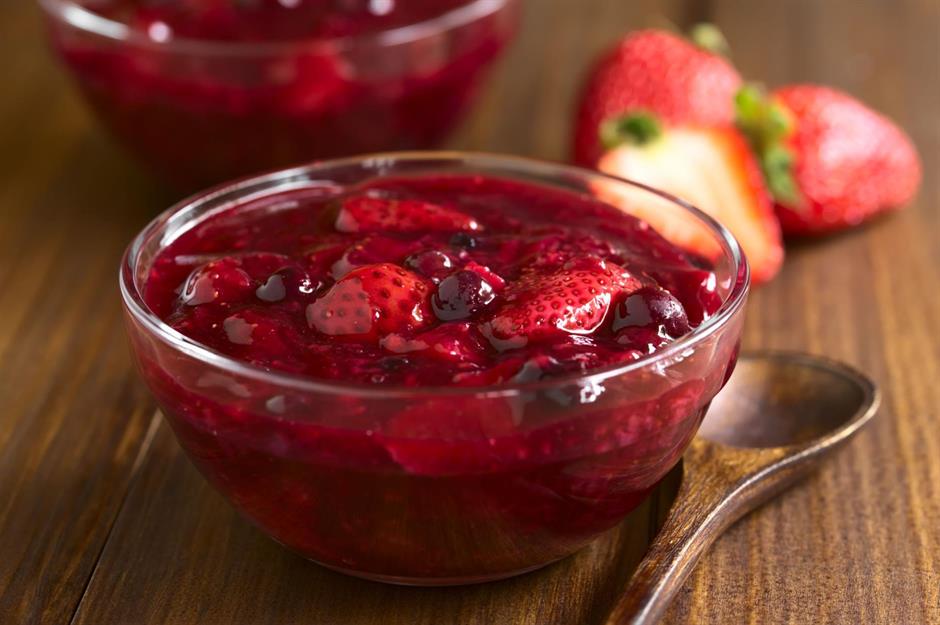
This tasty dessert was particularly popular in northern Germany, but also in Scandinavia. To make it, boil some red berries (such as redcurrants, raspberries, cherries and strawberries) in fruit juice with sugar and vanilla. Traditionally, people would use groats to thicken the liquid, hence the name rote grütze (red groats) – but starch does the trick, too. The jelly-like treat can then be served with semolina pudding, vanilla sauce or ice cream. You can find this traditional dessert pre-packaged in most German supermarkets, but hardly anyone makes it from scratch these days.
16. Grüne neune
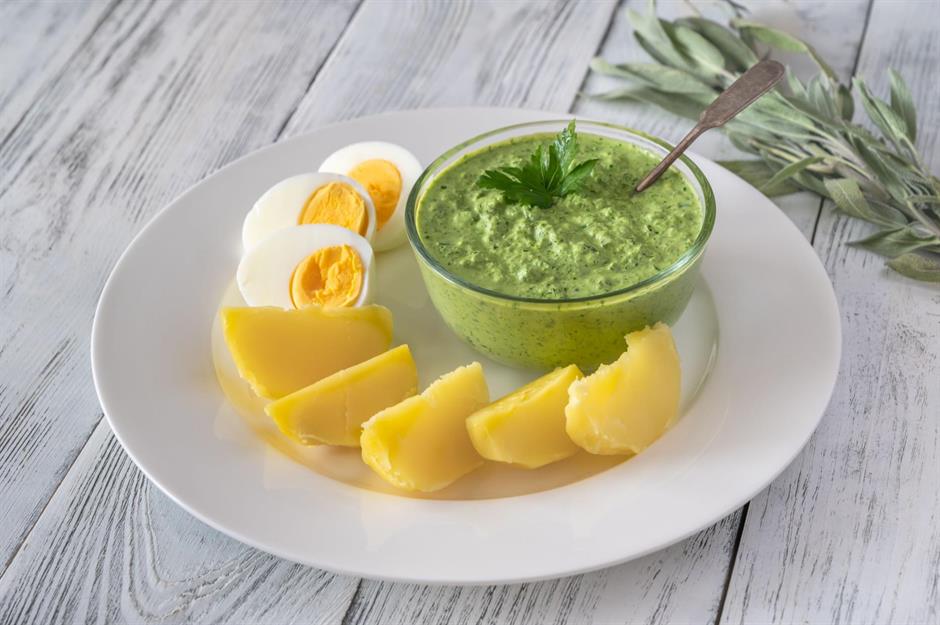
This herby soup, also known regionally as Frankfurt grüne soße (Frankfurt green sauce), is prepared with nine fresh wild herbs – hence the name, which loosely translates as 'the green nines'. While the dish is traditionally eaten on Maundy Thursday (the Thursday before Easter), its origins outdate Christianity and are likely to stem back to Celtic and Germanic tribes. You're completely free to experiment with your choice of herbs; stinging nettles, wild garlic, ground elder, ribwort, sorrel, ground ivy, borage, garlic rue and even daisies are often used.
15. Elderberry soup
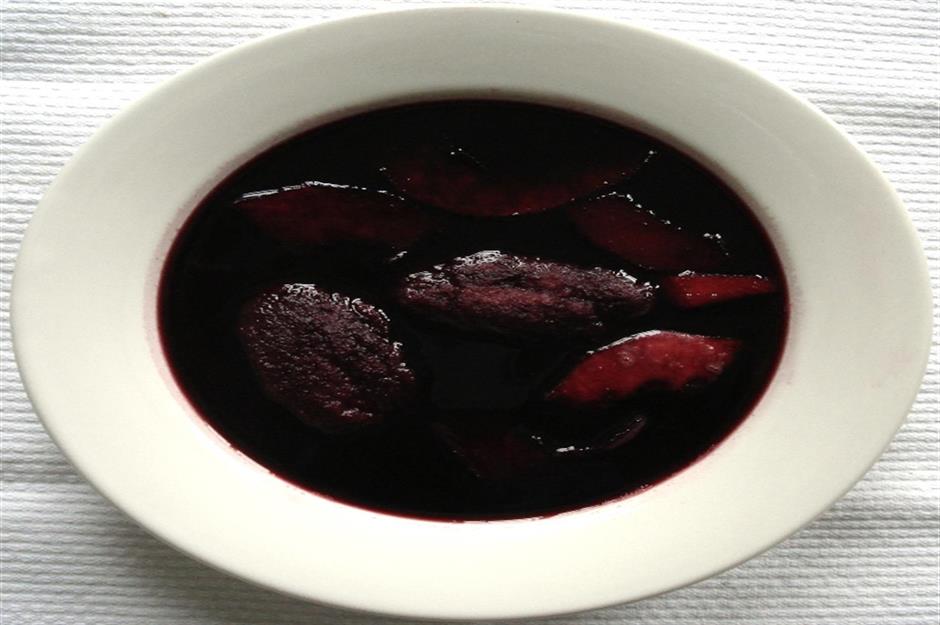
This may come as a surprise to some, but soup doesn't always have to consist of vegetables! This warming winter classic is made from black elderberries. The boiled berry juice is mixed with sugar and citric acid, then served hot, usually with semolina dumplings and apple chunks. This dish was mainly eaten in the north of Germany, but you’ll rarely find it in people’s soup bowls nowadays.
14. Griebenschmalz

There’s a lot of flavour in this rendered animal fat, which has crunchy pieces of crackling running through it. It makes a delicious spread on rustic German bread, especially with a good sprinkle of salt or pickles on top, and it’s a popular cooking ingredient, too. It can take the place of butter and other fats, adding flavour to lots of dishes, and it might incorporate apple, onions, and herbs and spices such as thyme and allspice.
13. Pears, beans and bacon
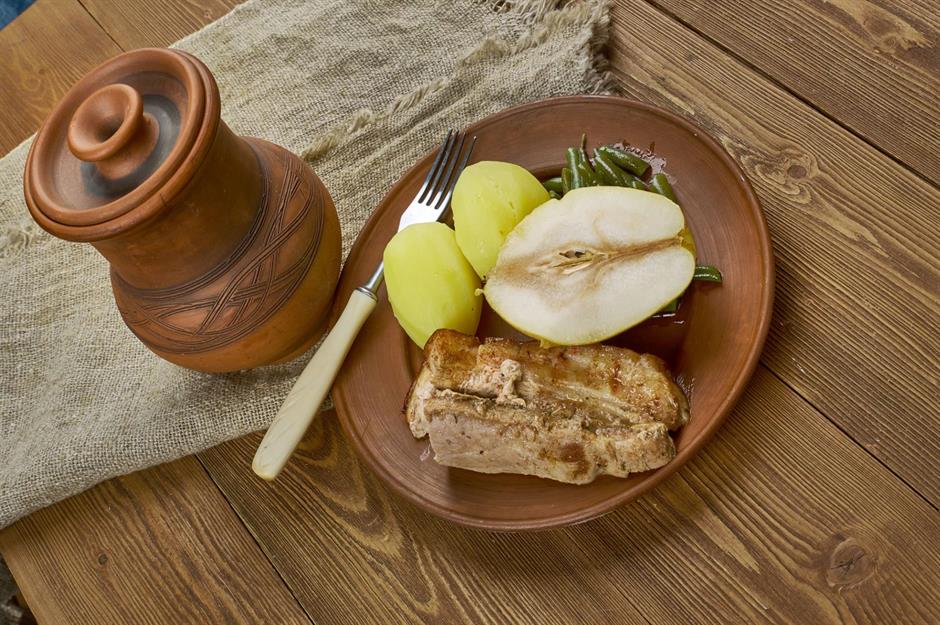
Yes, this may sound like an unusual combination. However, for a long time, a dish of pears, beans and bacon was eaten in homes all over Germany, particularly in the north. And the name is meant literally, because this hearty autumn classic, commonly served with boiled potatoes, consists of exactly these ingredients –the pears being cooking pears, and the beans being green beans.
12. Labskaus
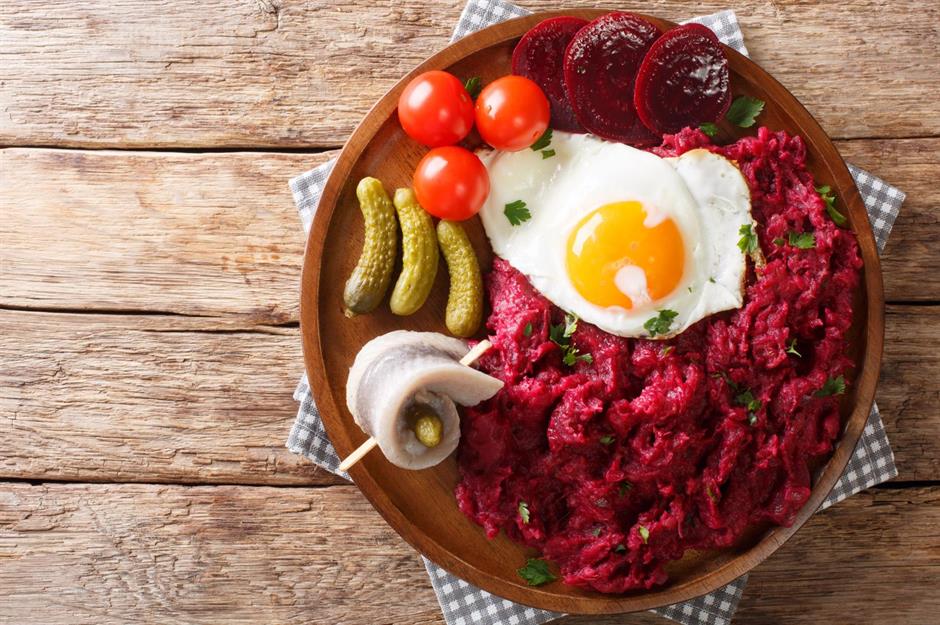
This dish was first eaten on ships during the early 18th century and was most likely inspired by the Liverpudlian dish Scouse – although only very loosely. Unlike the British version, labskaus (the sailor's meal) isn't a stew; it's made from potatoes, cured beef and pickled beetroot, and it's often served with gherkins or herring on the side. While it's not well known in many parts of Germany, you'll still find it on menus around northern Germany. So, if you’re keen to eat like a Hanseatic sailor, your best bet would be a traditional restaurant in Hamburg.
11. Beer soup
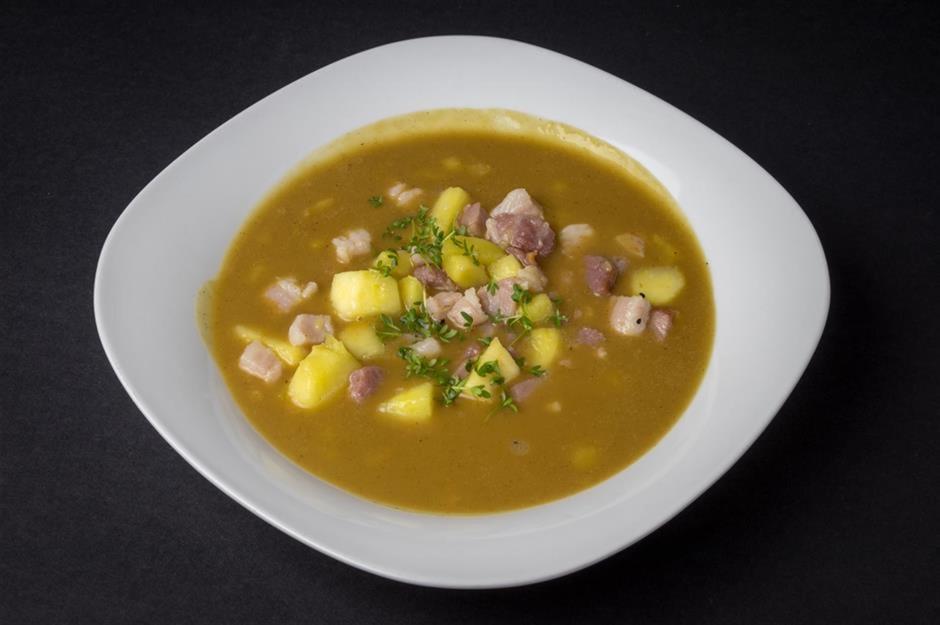
Beer isn’t just for drinking, even if plenty of it's consumed that way in Germany. It’s also a useful culinary ingredient, including in this hearty soup. It might sound strange, but this soup began as a breakfast dish – although it makes more sense when you discover that it’s traditionally made with leftover beer. Dark rye bread and cheese are often incorporated into the dish to create a creamy, comforting bowl, but ingredients vary, and the soup can even be sweet.
10. Buckwheat porridge
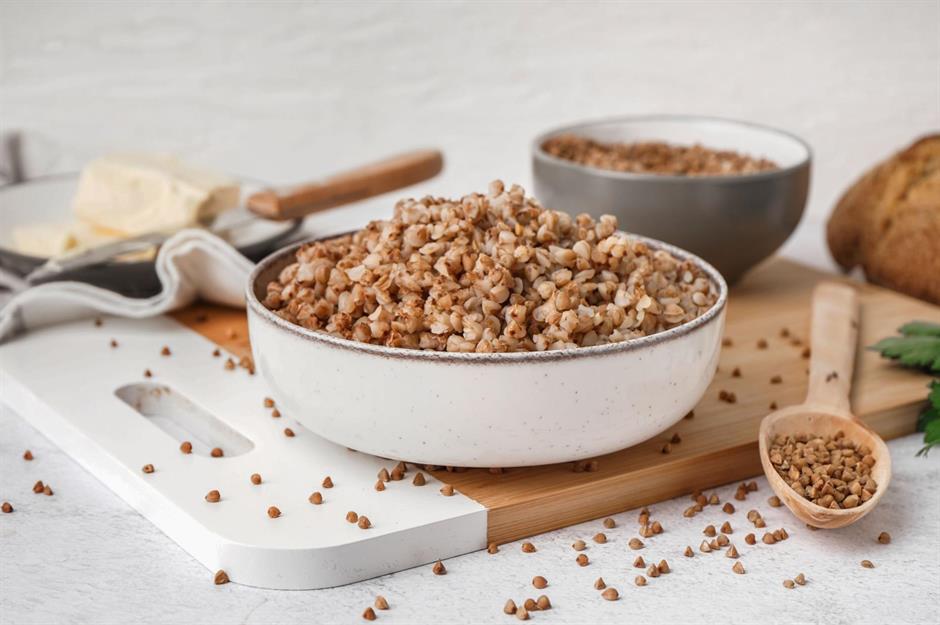
Buckwheat porridge is made from nutty-tasting groats, and it offers a versatile base for all sorts of sweet and savoury variations. It’s pretty easy, too; simply boil the buckwheat groats in vegetable stock, water or milk, and there you have it – an inexpensive, healthy and gluten-free meal option. Try adding fruits, nuts and other toppings and mix-ins for more flavour.
9. Grünkohl mit pinkel
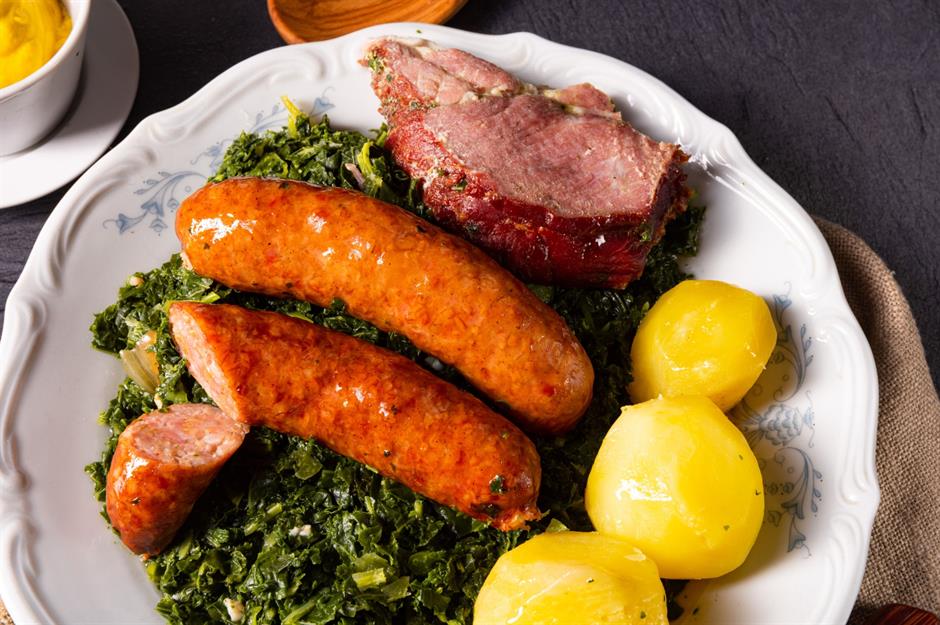
Pinkel, a smoked blood sausage made with bacon, lard and oats or barley, is mainly enjoyed in northwest Germany. Together with kale (grünkohl) and pork belly – and sometimes other types of sausages – it’s turned into a delicious stew that’s served with potatoes, which are sometimes caramelised for sweet, crispy edges. Not just tasty, but super nutritious too (kale is packed with vitamins and minerals), it’s a filling winter dish that’s full of goodness.
8. Chicken fricassée

Strictly speaking, chicken fricassée isn't a German dish (fricassées were first made in France), but it used to be so popular that it deserves an honourable mention. Most families in Germany used to include it in their weekly meal repertoire, though the dish rarely ends up on the dinner table nowadays. The creamy white sauce, filled with chicken, mushrooms, peas and carrots, is usually served with white rice. It's a great way to use up your leftovers – you can throw in any vegetables, fish or meat you like.
7. Hanseaten biscuits
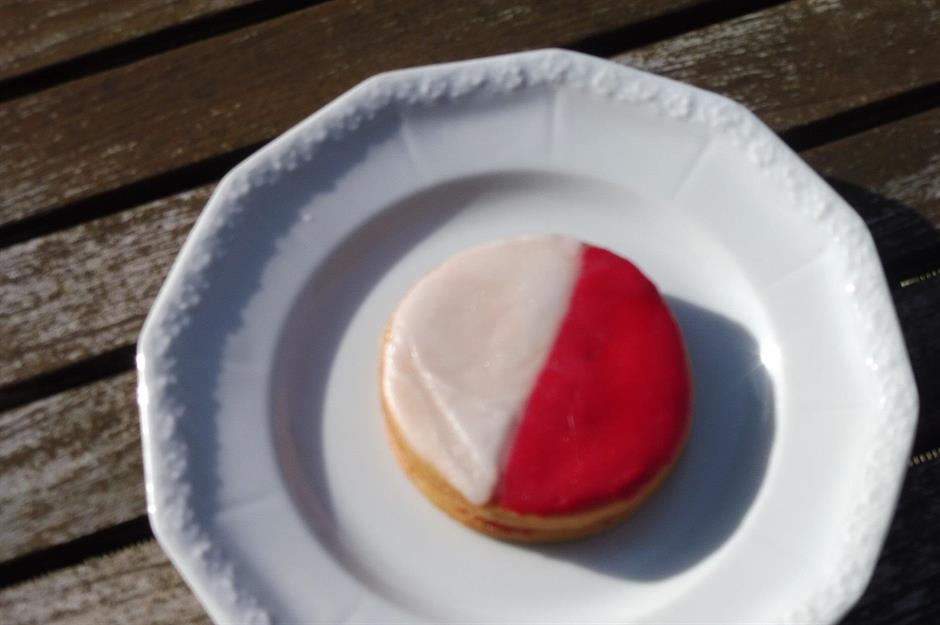
We have master baker Heinrich Schabbel to thank for this northern German delicacy. The biscuit dates back to the 19th century, when it was often served with coffee in the afternoon. You can still find the biscuit in northern German bakeries, but more often than not it will be in a modern variation, such as a heart shape. Traditionally, it consists of two round biscuits with jagged edges, held together by a portion of strawberry or raspberry jam. The top biscuit is slathered with red and white icing to commemorate the Hanseatic flag.
6. Falscher hase
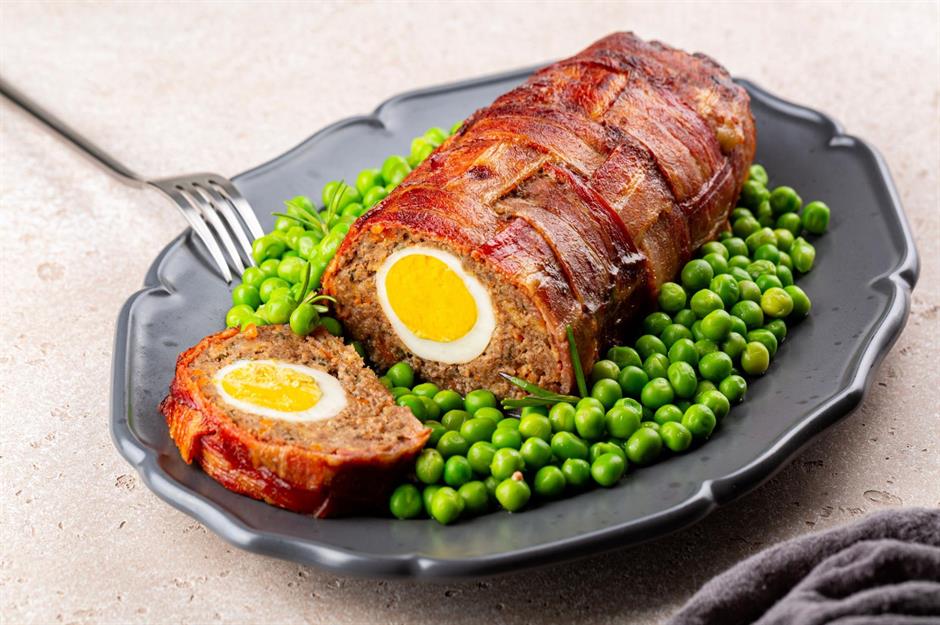
The jokingly named falscher hase (fake rabbit) is a juicy meatloaf stuffed with egg and, occasionally, carrots. Since many households couldn’t afford a real rabbit as a roast during the post-war years, this cheaper alternative, made from minced meat, became popular around Germany, including in the German Democratic Republic (East Germany).
5. Turnip stew
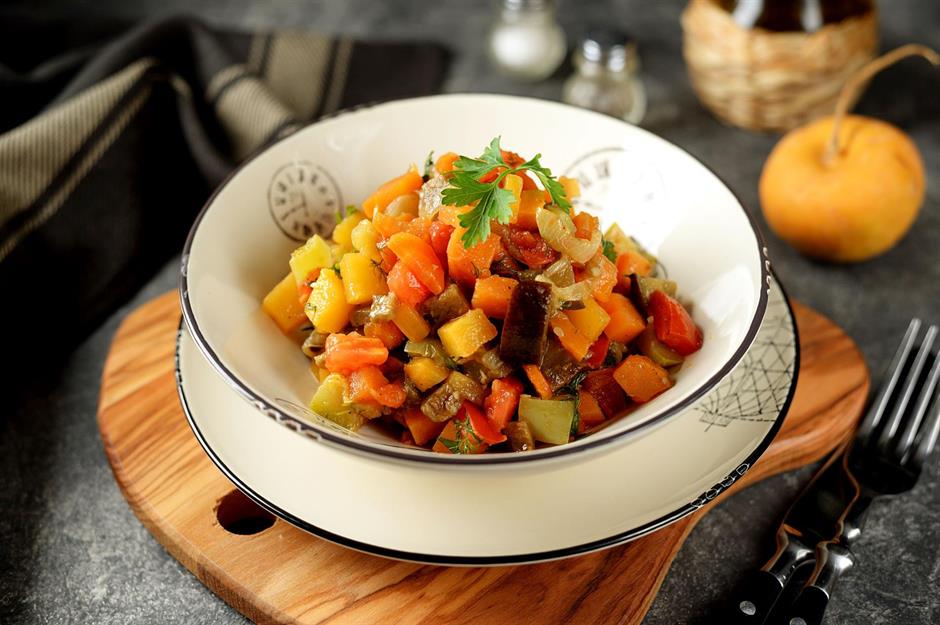
The turnip originated in Scandinavia, but it's played a special role in Germany’s history, especially in times of great hardship; the so-called Turnip Winter, when food shortages left people to survive on turnips during World War I, is just one example. A hearty turnip stew isn't just a cheap and warming meal, though – it’s also healthy, nutritious and delicious.
4. Fantakuchen
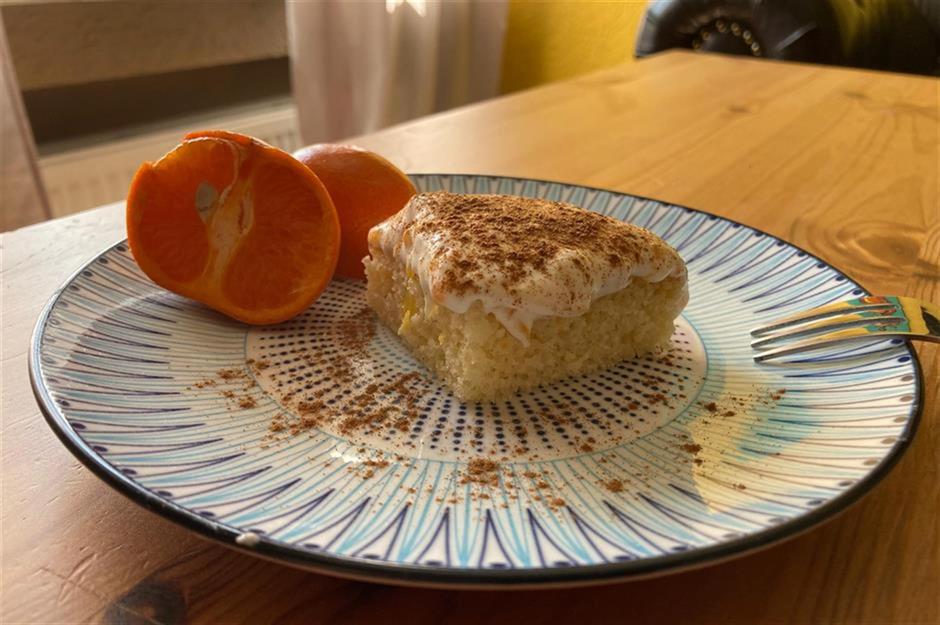
Fanta (yes, the orange fizzy drink) gives this cake sweetness and a hint of citrus flavour. When it was invented by Coca-Cola during World War II, Fanta became popular as a cooking and baking ingredient as well as a drink, resulting in the creation of this slightly unusual – but nevertheless delicious – cake. It’s topped with a lemon glaze or a creamy mix of sour cream, whipped cream, sugar and mandarin segments (from a can, for maximum softness and syrupiness).
3. Hawaiian chicken salad
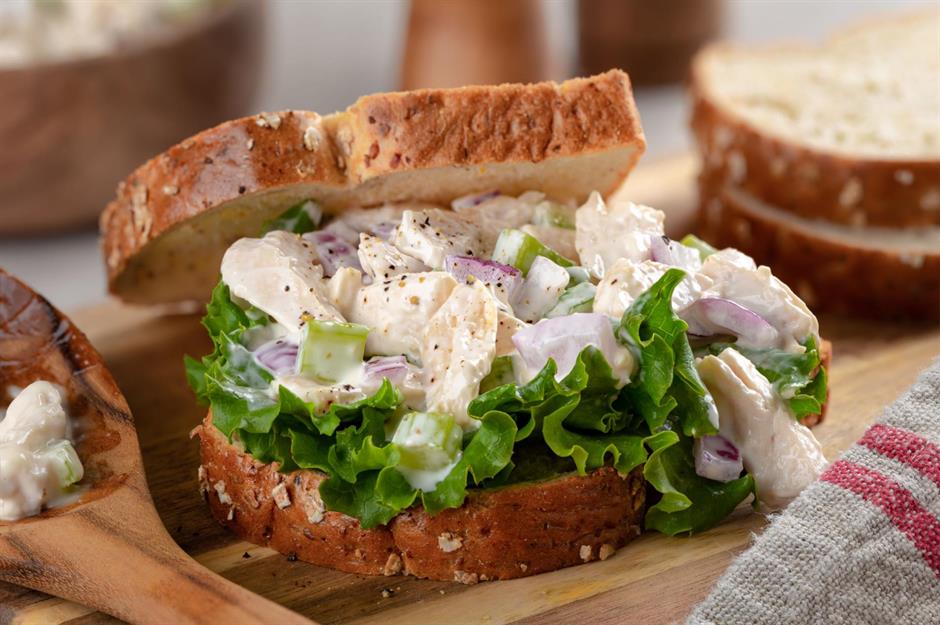
Hawaiian-inspired dishes used to be a real hit in Germany. Like the aforementioned toast Hawaii, this classic also includes pineapples – bearing in mind that they were fairly difficult to come by in post-war East Germany. Combine small pieces of chicken breast and pineapple cubes with mayonnaise, then spread the mixture on bread. The dish can, of course, be combined with other ingredients, such as gherkins, tomatoes and other types of fruit. For a slightly lower-fat version, just swap the mayo for some yogurt.
2. Rundstück warm
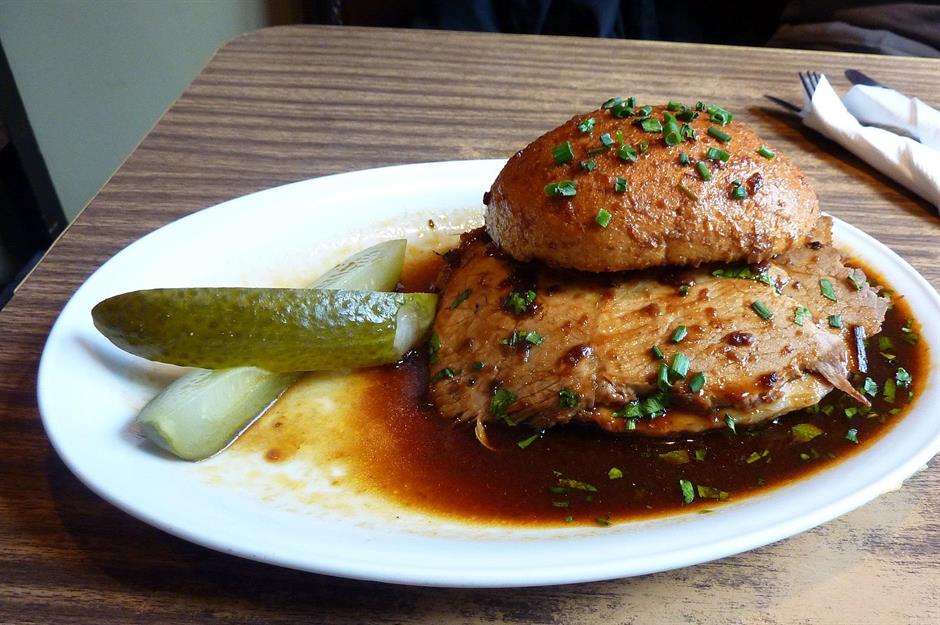
While rundstück is a northern German term for a bread roll, rundstück warm is a dish in itself, made by slotting a warm slice of roast beef or pork into a bun, then covering the whole thing in gravy – often with some gherkins on the side. The popular dish has been served in Hamburg since the early 20th century, but it isn’t really known elsewhere in Germany. Some, however, claim that it could be an early version of a hamburger – something that's still hotly debated today.
1. Kalter hund

Another somewhat obscurely named dish, kalter hund (cold dog) is an uncooked chocolate dessert that was very popular in East Germany. A layer cake made of butter biscuits, coconut fat and chocolate, with a little rum flavouring, it's known by many different names, including hedgehog slice and cold biscuit cake. This one definitely deserves a comeback.
Now discover the best restaurants in every German state
Last updated by Laura Ellis.
Comments
Do you want to comment on this article? You need to be signed in for this feature